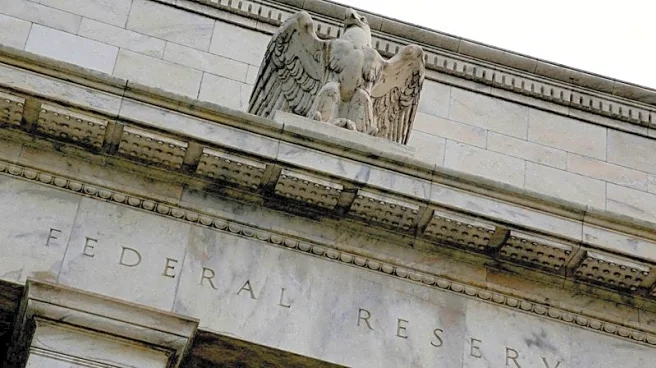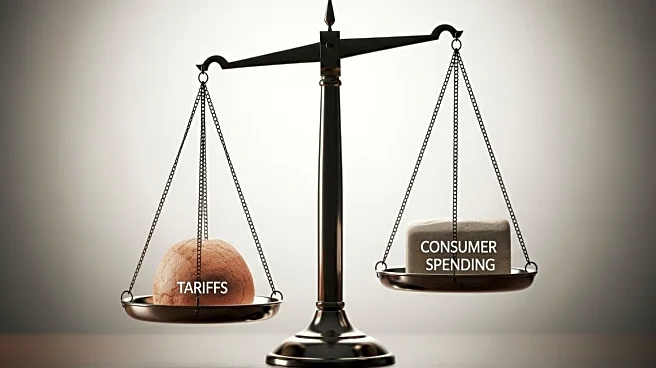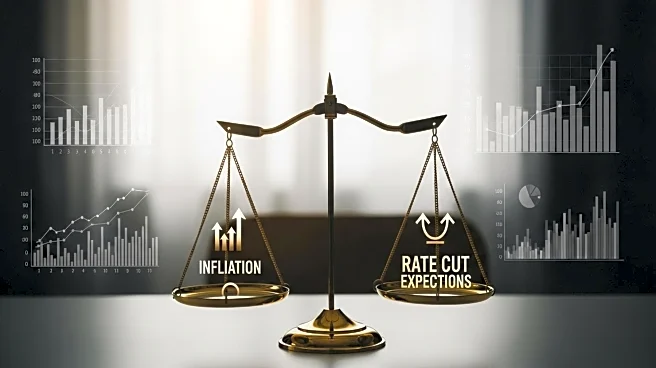What is the story about?
What's Happening?
The Federal Reserve is progressing with its quantitative tightening (QT) strategy, aimed at reducing its balance sheet, which has reached a new phase as the use of its overnight reverse repo facility has nearly ceased. This facility, which peaked at $2.6 trillion at the end of 2022, has been a key tool for managing excess liquidity by allowing money market funds to park surplus cash. The Fed's QT process involves letting Treasury and mortgage bonds expire without replacement, reducing its holdings from $9 trillion in mid-2022 to $6.7 trillion currently. The reverse repo rate helps set a floor for the Fed's interest rate target, currently between 4.25% and 4.50%. As reverse repo usage declines, the Fed anticipates increased reliance on its Standing Repo Facility (SRF) to maintain market stability, especially during liquidity swings at month and quarter ends.
Why It's Important?
The reduction in reverse repo usage signals a significant shift in the Fed's approach to managing liquidity, which could impact short-term interest rates and the broader financial system. The Fed's ability to control its interest rate target is crucial for economic stability, and any missteps could lead to volatility in money markets. The SRF, although untested in high-demand situations, is expected to play a critical role in absorbing liquidity shocks. The Fed's actions are closely watched by market participants, as they influence borrowing costs, investment decisions, and overall economic growth. The ongoing QT process reflects the Fed's commitment to normalizing monetary policy post-pandemic, but it also poses risks if liquidity tightens excessively.
What's Next?
The Fed plans to continue its QT strategy into next year, but the effectiveness of the SRF in maintaining market stability remains uncertain. The Fed has indicated it may resort to traditional repo operations if needed to add liquidity. Market analysts are divided on how much further reserves can decline before causing instability. Some suggest QT should halt soon due to tighter monetary conditions, while others believe reserves can decrease further. The Fed's future actions will depend on evolving market conditions and the effectiveness of its tools in managing liquidity.
AI Generated Content
Do you find this article useful?















